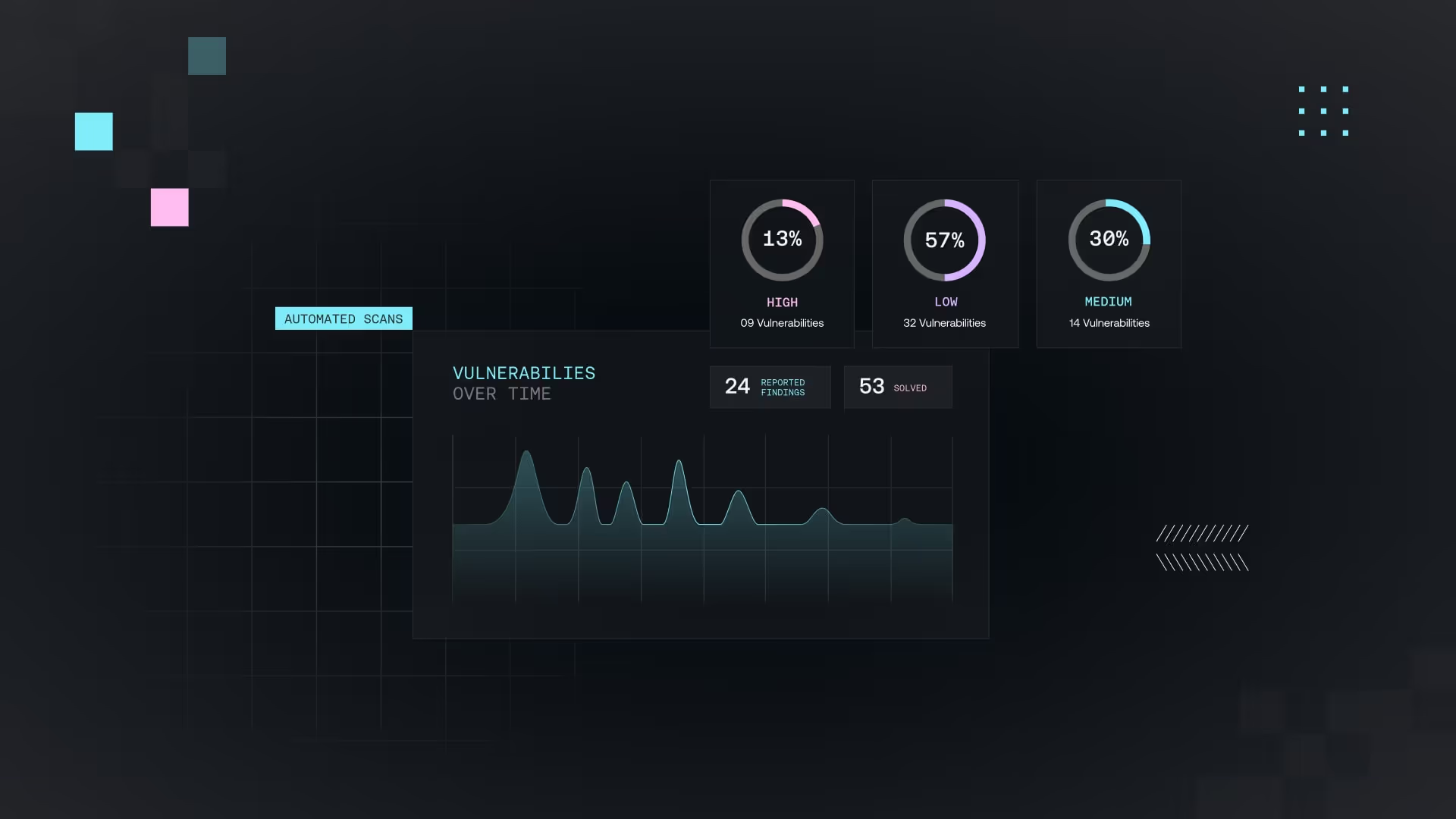3 reasons why Automated Scans are essential for every business security

As companies take their first steps in implementing security strategies, automated scans offer a reliable foundation to protect their digital ecosystem. These scans help identify known vulnerabilities quickly, allowing businesses to respond to potential threats before they escalate into real issues.
Let’s explore why automated scans are crucial for every business's security.
#1 - Continuous monitoring for cyber threats
Automated scans provide continuous monitoring of your systems, detecting vulnerabilities that may arise as your business grows or technology evolves. Unlike manual scans, which can be time-consuming and sporadic, automated scanning runs on a regular schedule, defined by the user. This ensures you’re always ahead of potential weaknesses. Businesses can identify and resolve vulnerabilities before they escalate, minimizing downtime and keeping their operations secure.
#2 - Cost-effective and scalable security
For businesses just starting their security journey, manual testing or hiring a full-time security team can be financially daunting. Automated scans offer a cost-effective solution by providing frequent and reliable assessments without needing additional resources. These tools scale with your organization, adapting to both the size and complexity of your infrastructure as it grows. The investment in automation ultimately reduces the risk of breaches and the financial impact of data loss.
#3 - Simplified reporting for compliance and decision-making
Many businesses face regulatory requirements, and automated scans simplify achieving compliance certifications such as SOC2, ISO 27001, HIPAA, GDPR, and more. With detailed reports generated after each scan, companies have a clear view of where their security stands. These reports help decision-makers prioritize the most critical vulnerabilities, ensuring that time and resources are directed efficiently. Additionally, automated compliance checks reduce the chances of facing penalties due to security oversights.
Strike’s Scanner: Quick, simple, and 100% automated
Strike’s Scanner is an efficient, automated tool designed to make security testing simple and fast. Through Strike's self-service platform, users follow a straightforward process:
- Add the domains you need to test.
- Verify its ownership.
- Authenticate your domains (optional in case gray box testing is needed)
- Initiate the scan process.
- Analyze your results in our Vulnerability Manager.
The scanner checks for over 22,000 potential threats across web apps and APIs, delivering results within 5 to 8 hours in 80% of cases. Once the test is complete, users can access all data on the platform and receive a comprehensive PDF report, automatically generated and available for download at any time. This report is ideal for demonstrating your cybersecurity posture to external parties or auditors.
Automated tests provide a broad security overview, making them an ideal foundation before conducting a manual penetration test.
Where do automated scans fit in a cybersecurity strategy?
Before implementing any tools or processes, it’s essential to understand your organization’s current security setup. Conduct a thorough security audit to identify weaknesses, gaps, and potential risks. This assessment will guide all the steps that follow.
Next, it’s important to implement a risk management framework. This involves prioritizing risks, identifying key assets, and determining the appropriate level of security for each based on their importance to the business. A clear framework helps focus efforts on protecting the most important areas first.
Now, it's time for automated scans. After identifying priorities, integrate automated scans into your security toolkit. These scans will continuously monitor for vulnerabilities, giving you regular insights into potential threats. Automated scanning ensures that your system is constantly checked, providing real-time protection and reducing the manual workload on your team.
Then, with ongoing monitoring in place, ensure your organization is prepared to respond to incidents. An incident response plan is essential for minimizing damage and ensuring a coordinated, efficient response in case of a breach. This should include roles, procedures, and communication strategies.
Finally, establish processes to stay compliant with relevant regulations, and continuously improve your cybersecurity strategy. Regular audits, combined with automated scans, will ensure your systems are not only secure but also meeting regulatory standards. Always look for ways to enhance your defenses as new threats arise.




.avif)
.avif)
